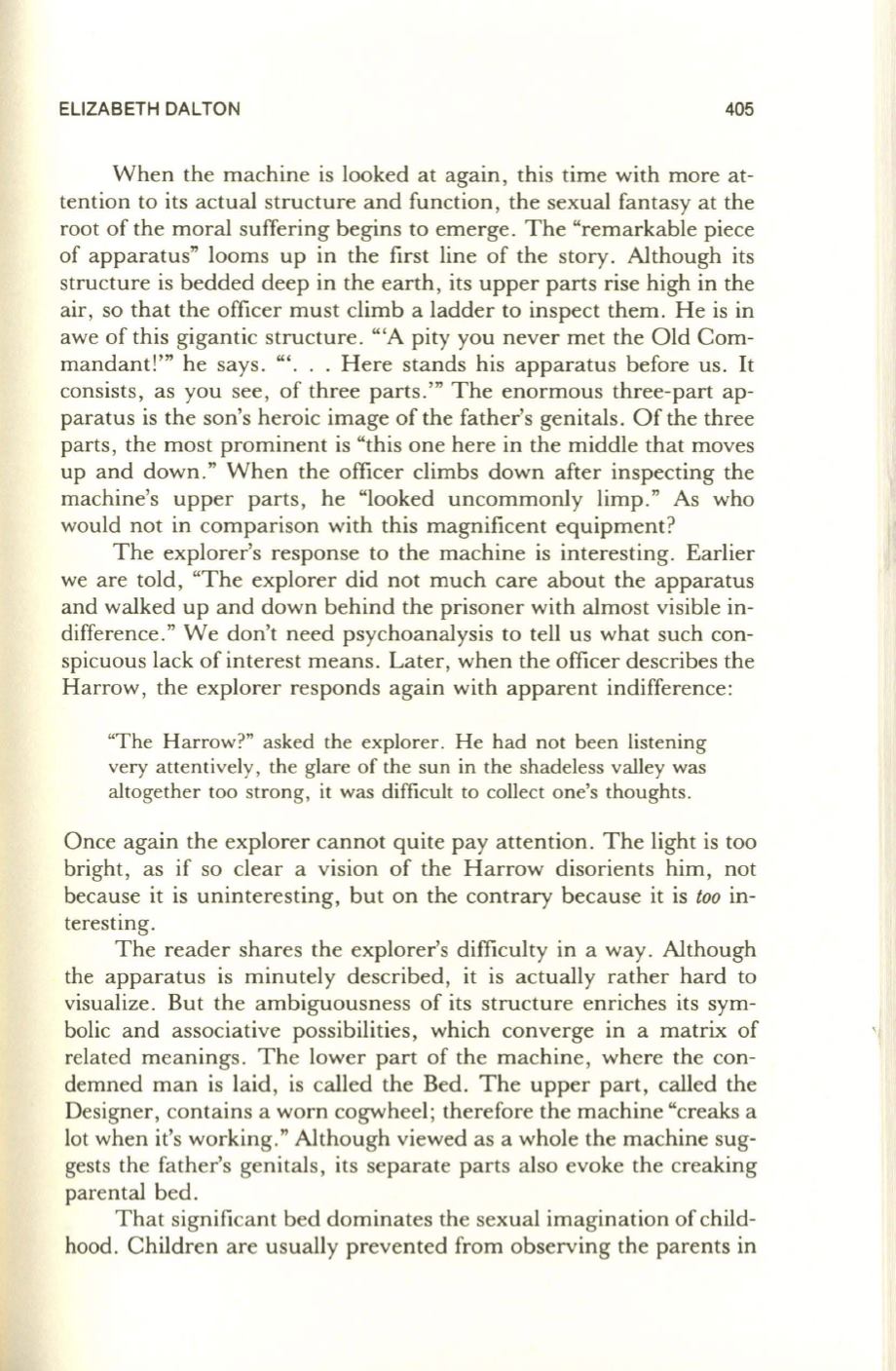
ELIZABETH DALTON
405
When the machine is looked at again, this time with more at–
tention to its actual structure and function, the sexual fantasy at the
root of the moral suffering begins to emerge. The "remarkable piece
of apparatus" looms up in the first line of the story. Although its
structure is bedded deep in the earth, its upper parts rise high in the
air, so that the officer must climb a ladder to inspect them. He is in
awe of this gigantic structure. "'A pity you never met the Old Com–
mandant!'" he says. "'... Here stands his apparatus before us.
It
consists, as you see, of three parts.'" The enormous three-part ap–
paratus is the son's heroic image of the father's genitals. Of the three
parts, the most prominent is "this one here in the middle that moves
up and down." When the officer climbs down after inspecting the
machine's upper parts, he "looked uncommonly limp." As who
would not in comparison with this magnificent equipment?
The explorer's response to the machine is interesting. Earlier
we are told, "The explorer did not much care about the apparatus
and walked up and down behind the prisoner with almost visible in–
difference." We don't need psychoanalysis to tell us what such con–
spicuous lack of interest means. Later, when the officer describes the
Harrow, the explorer responds again with apparent indifference:
"The Harrow?" asked the explorer. He had not been listening
very attentively, the glare of the sun in the shadeless valley was
altogether too strong, it was difficult to collect one's thoughts.
Once again the explorer cannot quite pay attention. The light is too
bright, as if so clear a vision of the Harrow disorients him, not
because it is uninteresting, but on the contrary because it is
too
in–
teresting.
The reader shares the explorer's difficulty in a way. Although
the apparatus is minutely described, it is actually rather hard to
visualize. But the ambiguousness of its structure enriches its sym–
bolic and associative possibilities, which converge in a matrix of
related meanings. The lower part of the machine, where the con–
demned man is laid, is called the Bed. The upper part, called the
Designer, contains a worn cogwheel; therefore the machine "creaks a
lot when it's working." Although viewed as a whole the machine sug–
gests the father's genitals, its separate parts also evoke the creaking
parental bed.
That significant bed dominates the sexual imagination of child–
hood. Children are usually prevented from observing the parents in


